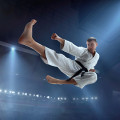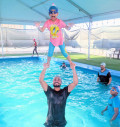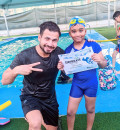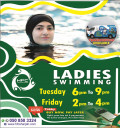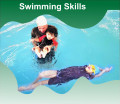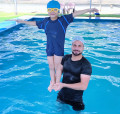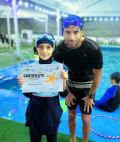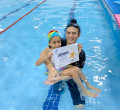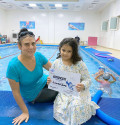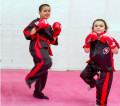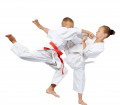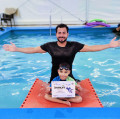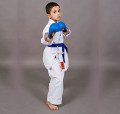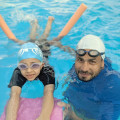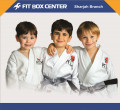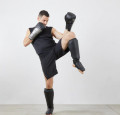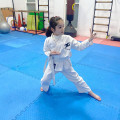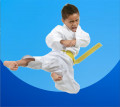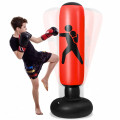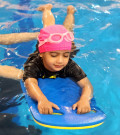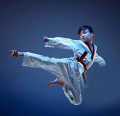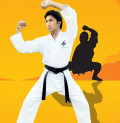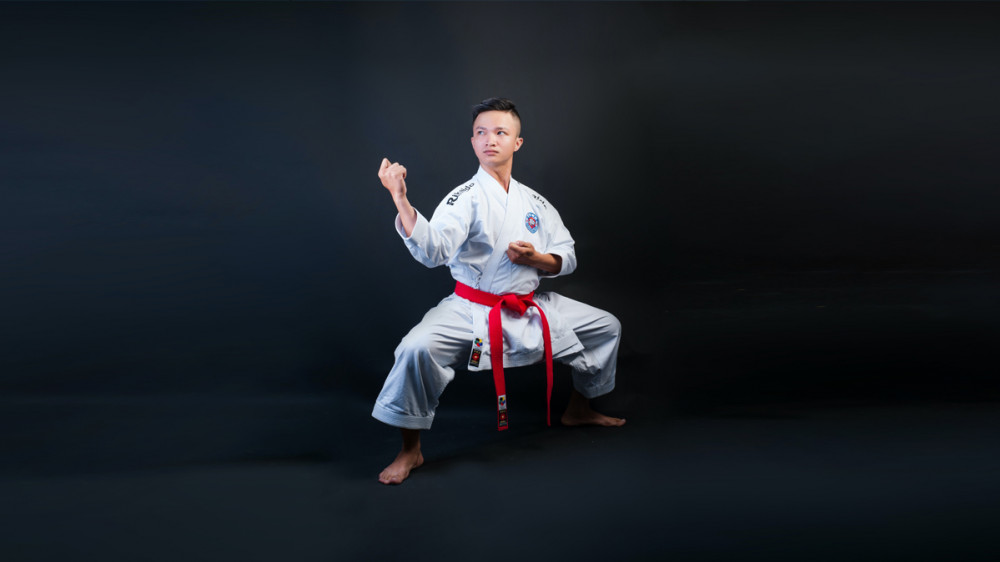
Get To Know the Karate Terms – Part 1
2023-01-07 - Martial Arts, Karate
Karate is a martial art that originated in Japan and is known for its striking techniques, such as kicks, punches, and elbow strikes, as well as its use of various blocking and dodging movements. There are many terms used in karate that are specific to the art, here are five of the most common:
Dojo:This is the training hall where karate is practiced. The word "dojo" literally means "place of the way."
Dojo" is a Japanese term that literally means "place of the way," and it refers to the training hall where karate is practiced. The dojo is considered a sacred space where students come to learn, train, and improve themselves both physically and mentally. A typical dojo usually contains a training area with mats or a wooden floor for safety, and a space for the students to change clothes and store their belongings. Some dojos may also have a small area for meditation or stretching, or a small library of martial arts books or videos. Students are expected to show respect and discipline while in the dojo, and follow a set of rules and customs, such as bowing when entering or leaving the dojo, keeping the dojo clean, and showing respect to the sensei and other students. The dojo is a special place where the student learns mental and moral values, such as respect, humility, hard work, perseverance, and the spirit of self-improvement.
Kata: A set of pre-arranged forms that are performed solo as a set of techniques. Kata has a specific sequence of movements and techniques that are performed in a specific order.
Each kata is a sequence of movements that includes strikes, blocks, kicks, and other techniques. Kata is an important aspect of traditional karate training, and it is designed to be a solo performance and expression of a certain set of techniques. Kata is usually performed individually and in front of an audience, either a sensei or a group of students. The student will perform a sequence of movements, one after another, with a specific rhythm and speed, while showing correct technique, power and control. The kata is usually named after the person who created it, or the place where it comes from. Kata is a way to practice the techniques in a safe and controlled environment, to develop power, balance, focus, and precision. It is also a way to improve the student's performance under pressure and to develop the student's understanding of distance, timing, and strategy. In addition, practicing kata also has a mental and spiritual aspect, it helps the student to develop concentration, discipline, and creativity. It also connects the student to the history and cultural roots of Karate. It's important to note that kata does not have a specific opponent in mind but is a way to understand the techniques and principles in karate and how to apply them in various situations.
Kumite: sparring, which is the practice of techniques and combinations against a partner.
Kumite is an essential part of karate training, as it allows the student to practice and refine their techniques against a moving, resisting opponent. Kumite training can take on many different forms depending on the school, style or organization. It can be light contact, full contact, semi-contact, point sparring, or free-style sparring. Each type of sparring has its own rules and objectives. For example, light contact sparring is used to focus on technique, speed, and accuracy, while full contact sparring is used to practice techniques at full power and speed with minimal safety gear. The most important aspect of kumite training is safety, and the student must wear proper protective gear such as mouthguard, headgear, gloves, and shin guards. The student must also follow the rules of the dojo and use control when practicing. Kumite is not only about physical skills, but also about mental skills. It helps the student to develop reflexes, timing, distance, strategy, and adaptation. It also helps the student to develop a sense of humility, respect, and control, both physically and emotionally.
Sensei: this is the term for a karate instructor, teacher or master.
Sensei, word of Japanese origin, is considered to be the person who has reached a certain level of proficiency in karate and who has the knowledge, skills, and experience to teach and guide others. A sensei is responsible for teaching the techniques, principles and values of karate, as well as for leading the students during training. They are responsible for the safety, discipline and respect of the students, and for creating a positive and healthy learning environment. They also serve as role models for their students, not only in terms of technical proficiency but also in terms of character and values. The relationship between a sensei and a student is considered to be a special one, built on trust, respect, and mutual understanding. The student is expected to show respect and follow the sensei's instructions, while the sensei is responsible for leading and guiding the student in their training and personal development. It's worth mentioning that the term Sensei is not only used in Karate but also in many other martial arts, and other traditional Japanese arts, such as calligraphy, flower arrangement, tea ceremony and others. It's a term for a teacher, mentor or master in any field.
Kihon: Basic techniques, such as strikes, blocks, and stances.
Kihon, which literally means "basic," refers to the foundation of karate techniques that all students are expected to master. These techniques include strikes, blocks, and stances, and they form the building blocks of more advanced techniques. Kihon training is important because it helps students to develop proper technique, muscle memory, and control. Mastering kihon techniques is an important step in the progress of the student, it helps to develop the correct body mechanics, power, balance, focus and precision. It also provides a strong foundation for the student to build upon as they progress through the ranks. It's important to note that, Kihon training is never really finished, it's a continuous process, and students will continue to refine and improve their techniques throughout their karate journey.
.







.jpg)





